Happy Lunar New Year! Celebrating the Year of the Pig Around the World
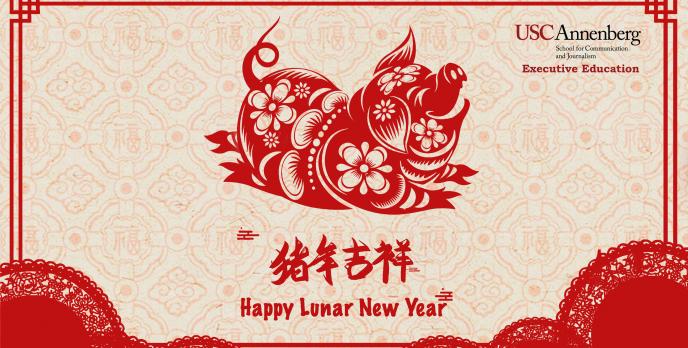
On February 5th, families and friends around the globe come together to celebrate the Lunar New Year. While the red lanterns and blazing fireworks that mark China’s 15-day long "Spring Festival" are perhaps the most famous of the festivities, many countries celebrate the start of the New Year in their own unique way. The Year of the Pig will kick-off worldwide with extravagant celebrations rooted in deep historical and cultural tradition.
China

The most important holiday of the year, China’s Spring Festival is celebrated by the Chinese community around the world. Sparkling firecrackers and fireworks light up the sky, not only as an impressive display of celebration, but as a traditional way to ward off evil spirits. The color red—symbolizing good luck and prosperity— can be seen everywhere, from lanterns to paper decorations that adorn the streets. It is customary for red envelopes containing money to be handed out as gifts from elders to younger relatives, from married couples to single loved ones, and from bosses to employees. From major cities to small villages, distinctive fanfare in the form of markets, carnivals, and traditional performances can be found all over China.
Indonesia
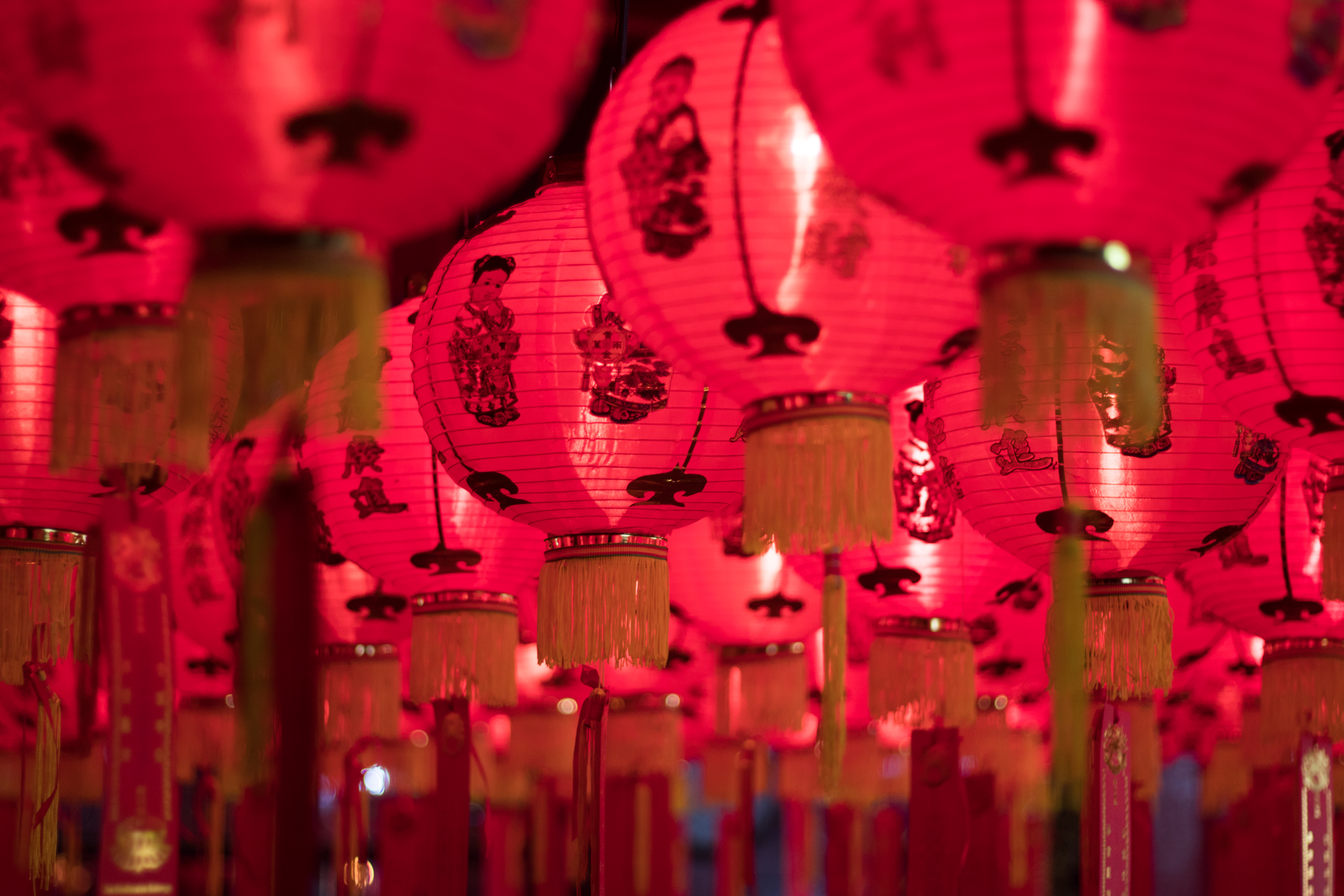
The Chinese Spring Festival in Indonesia—locally referred to as Imlek—was declared a national holiday in 2002, so many city-held festivals and events have only been around for about a decade. Festivities feature a unique blend of traditional Chinese customs with local Indonesian culture. In Surakarta (or Solo), Central Java, the week-long Grebeg Sudiro carnival takes over the Pasar Gede area, featuring both countries’ traditional celebratory foods, live performances and dances, and a lantern release. In Jakarta’s Glodok area, the country’s largest Chinatown, the iconic red lanterns and other decorations line the streets, while traditional Chinese lion dances and drumlines are performed in numerous places.
Malaysia
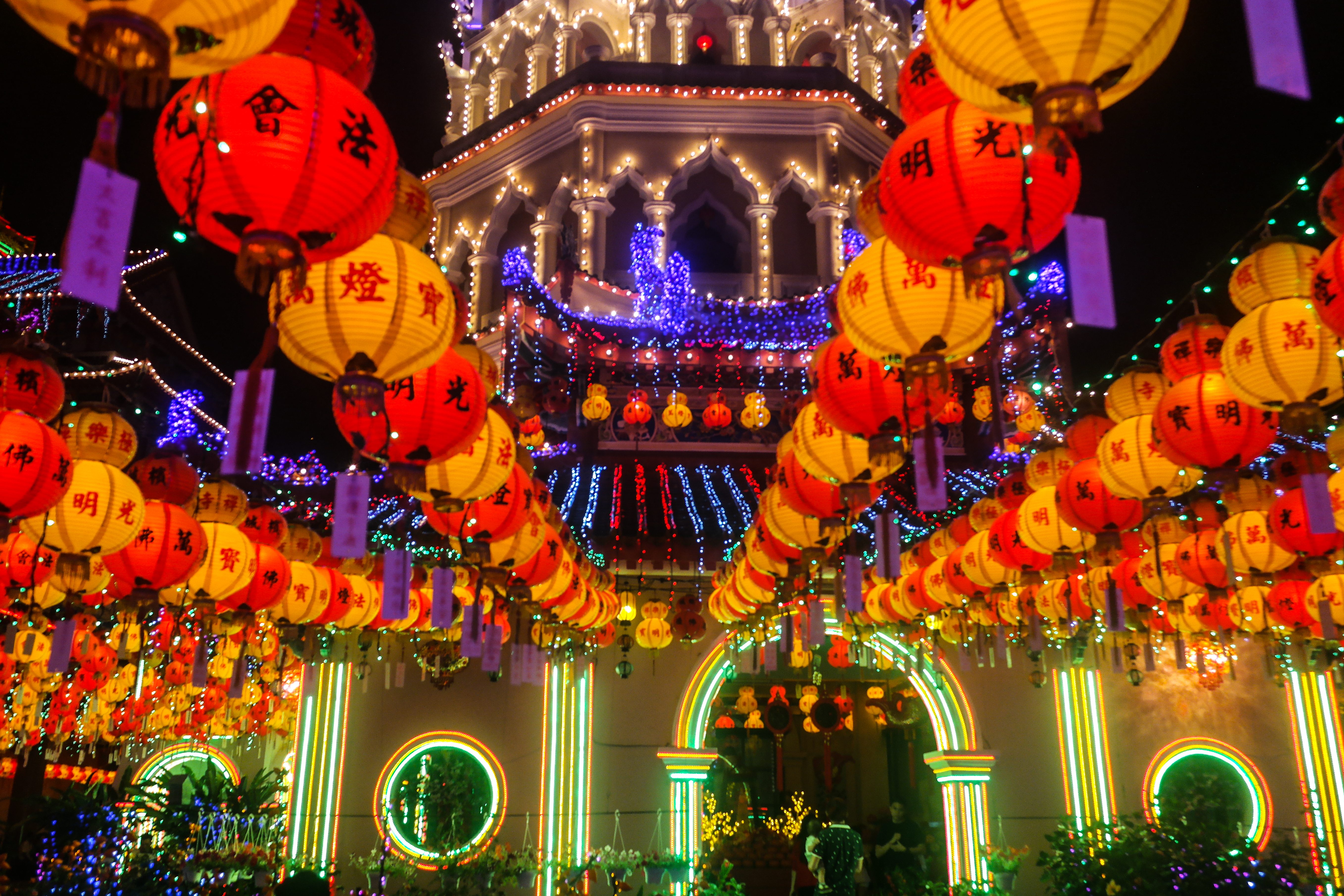
About 25% of Malaysia’s population is ethnic Chinese, making Spring Festival one of the biggest holidays in the country— particularly in the cities of Kuala Lumpur and Penang. Penang hosts a massive annual street party that runs late into the night and involves a number of beautiful temples, including a renown 10,000 lantern display at the Chinese-Buddhist Kek Lok Si Temple. Kuala Lumpur’s Petaling Street is also home to ornate temples that hold prayer services for the New Year and a spectacular firework show. About 45-minutes outside of the city is Dong Zen Temple in Jenjarom, home to the annual award-winning Chinese New Year Lantern & Flora Festival that attracts over a million visitors per year.
Thailand
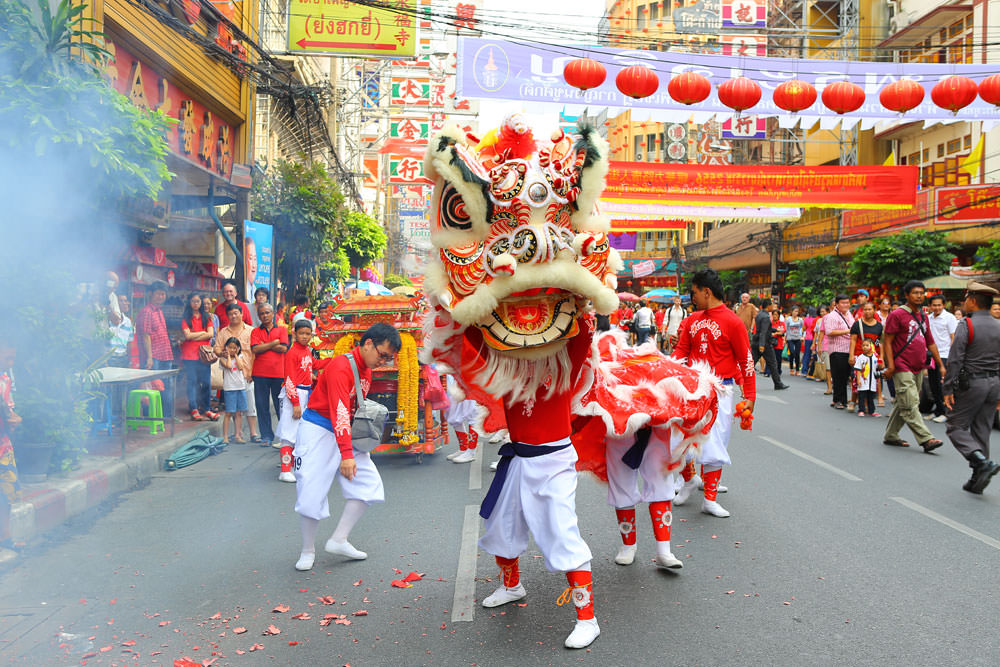
Though Spring Festival is not a nationally recognized public holiday, there is still a widespread celebration of the Lunar New Year, namely due to Thailand being home to the largest overseas Chinese population. Yaowaraj, Bangkok’s Chinatown, becomes a sea of red during Spring Festivals, with live performances that include a dragon parade, banquets of traditional Chinese food and appearances by revered Thai princesses.
Singapore
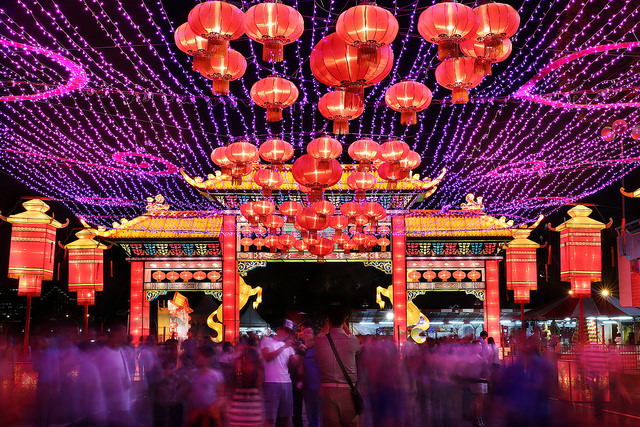
Roughly 75% of Singapore’s population is ethnic Chinese, a culturally significant fact highlighted by the country’s extravagant celebration of the New Year. For six weeks, lanterns adorn and illuminate the streets of Chinatown, as vibrant nightly stage performances and an extensive street bazaar set the festive scene in the weeks leading up to the big night itself. Perhaps the most notable and opulent tradition, though, are the annual Chingay Parade and River Hongbao held in Marina Bay, featuring lavish floats, extravagant handcrafted lanterns, firework spectaculars and operatic performances.
Vietnam

Tết Nguyên Đán— “Tết” for short— is the Vietnamese celebration of the Lunar New Year. While China’s Spring Festival celebrations last at least two weeks, Tết is typically shorter. The core of the holiday lasts three days, though revelries can extend into the week. Above anything else, Tết is a family-oriented holiday and is used as a time to honor ancestors. The first day, which falls on the Lunar New Year, is considered the most important and is dedicated to immediate family; the second day is meant for spending time with extended family and friends; the third is dedicated to teachers and education. Traditional meals that include foods such as bánh chưng (a square rice cake), xôi gac (red sticky rice) and thịt gà (boiled chicken) are used to honor ancestors and bring good fortune for the year ahead.
South Korea

Also marking the start of the Lunar Calendar is the Korean Lunar New Year, known as Seollal. The celebration of the New Year is filled with tradition, from dress to rituals. Colorful Hanbok—Korean traditional dress—is often worn to symbolize hope for a bright future. Sebae, a New Year’s bow, is given by younger family members to their elders as a sign of respect in exchange for a blessing and sebaedon—a monetary gift. Ancestral rites and worship known as charye are also performed to honor deceased family members. The ritual includes an intricate meal of fresh traditional food that the Korean people believe their ancestors come back to join them for. The holiday, which lasts about five days, is extensively celebrated out of the home too, with magnificent live cultural performances and community activities and events.
Los Angeles
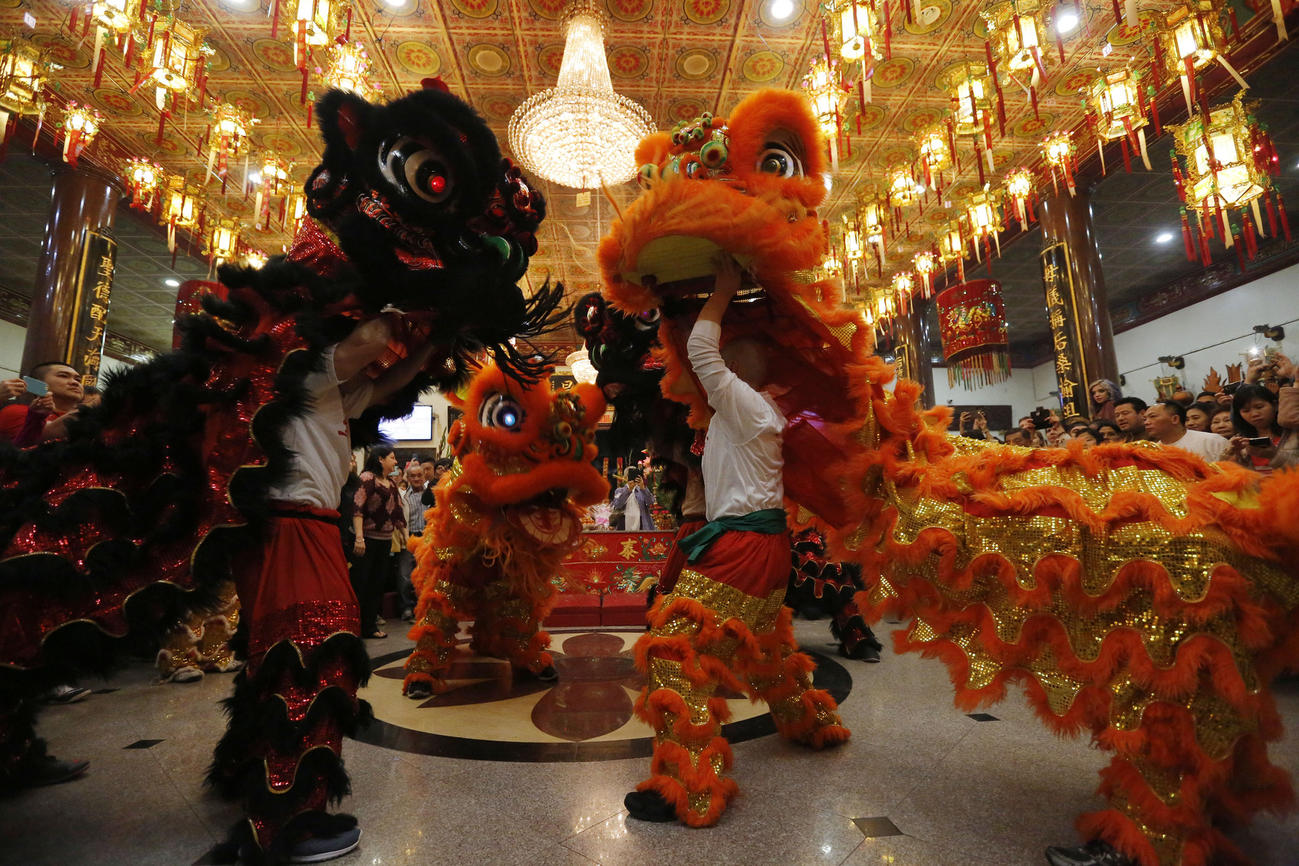
From Downtown to Disneyland, Los Angeles is rich with its own Chinese New Year traditions and festivities. Now in its 120th year, the annual Golden Dragon Parade will fill the streets of Chinatown with whimsy and color, dazzling thousands of spectators with over two dozen floats. The parade not only marks a celebration of Spring Festival but also proudly highlights the ethnic diversity of the Asian-American community and features Chinese-American businesses. This year’s parade falls on Saturday, February 9th. For those unable to make it Downtown, there are plenty of other events scattered throughout Greater Los Angeles. Santa Monica and Disneyland California Adventure host their own parades, while numerous celebrations that feature live performances such as lion dances are held at Pacific Asian Museum, Huntington Library and the Grove.

